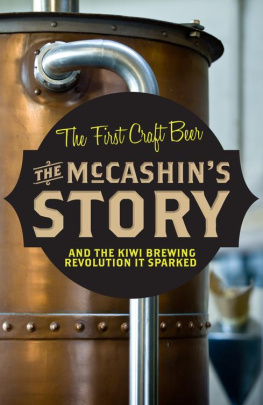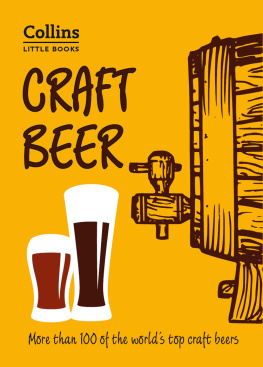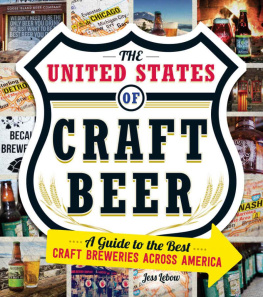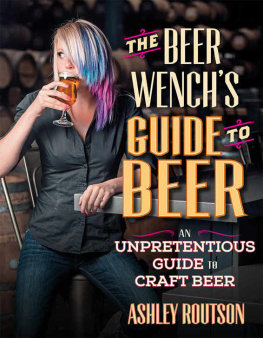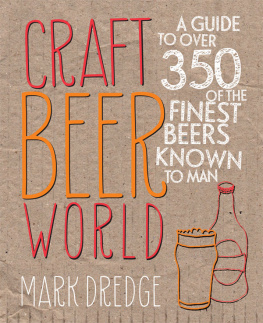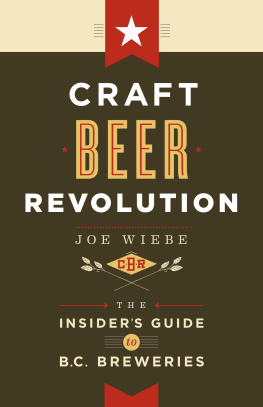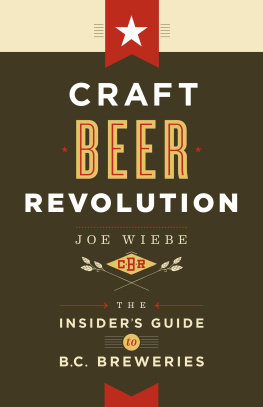THIS IS THE STORY OF A REVOLUTION A VERY KIWI KIND OF REVOLUTION, INVOLVING MORE BEER THAN BLOOD, ALTHOUGH THERE WAS ALSO PLENTY OF SWEAT AND TEARS.
There was a time, not so very long ago, when you walked into a bar and ordered a beer; that was about as complicated as it got. You would end up with a glass of something fizzy, light brown to pale gold in colour, its flavour notable for what it lacked rather than anything it delivered. It was a strange state of affairs, because New Zealanders have always loved beer.
But that all changed in 1981 when Terry McCashin and his wife Bev cobbled together a number eight wire brewery and Macs Brewery was born. The phenomenon we now know as the craft brewing movement had begun. After two decades of hard work the McCashins sold the very sucessful Macs brand to one of their competitors, and the story could have ended there. But Bev and Terrys children recently launched the latest incarnation of the McCashin family business, Stoke Beer.
This, then, is the story of the New Zealand brewing revolution sparked by Terry McCashin. Along the way, New Zealand politics, society, the way New Zealanders do business, the place of former icons such as rugby and beer changed profoundly. The story of the McCashin familys business is also the story of so many of the small business owners that make up this country, and its the story of the great Kiwi entrepreneurial spirit.
Contents
THIS IS THE STORY OF A REVOLUTION. IT WAS A VERY KIWI KIND OF REVOLUTION, INVOLVING MORE BEER THAN BLOOD, ALTHOUGH THERE WAS ALSO PLENTY OF SWEAT AND TEARS.
There was a time, not so very long ago, when you walked into a bar and ordered a beer: that was about as complicated as it got. The pub was likely to sell the products of only one brewery, but that scarcely mattered: those products tasted pretty much the same as the products of the other brewery, which the pub down the road likely sold. As for the product itself unless you were some kind of reckless nonconformist who would march in there, order a stout and see who cared you would end up with a glass of something fizzy, light brown to pale gold in colour, the faint, sour redolence of yeast affirming that it had undergone fermentation, its flavour, such as it was, notable for what it lacked rather than anything it delivered.
It was a strange state of affairs, because New Zealanders have always loved beer. The European migrants who settled here from the 1840s brought a love of beer with them, and some brought the constituent ingredients. New Zealand proved then and since that it has prime barley-and hops-growing territory. As the men who made the nation toiled with axe and plough, with pick and shovel, with hammer and anvil, others worked to produce the beer to quench their thirst. Brewers, supposing they could make enough and that it was of acceptable quality, became important men in their communities, wealthy and respected.
The darkest hour in New Zealands brewing history was right before the beginning of the story told here. By the late 1950s, a sustained period of consolidation of the many, many regional and local breweries scattered around the countryside produced a duopoly. The last of the regional breweries sold out in 1969, whereupon two Auckland-based conglomerates, New Zealand Breweries and Dominion Breweries, squared off against each other in a quest to dominate the market. To reduce their costs, each deployed the blackest of the industrialists dark arts in order to streamline and rationalise their production, which had the effect of homogenising the beer. Indeed, the vision that at least one of the two dominant players had for us was that everyone in the country should drink beer sold under just one label. Such was the temper of the times that the name they proposed for this single, execrable brew was Lucky.
That move failed. New Zealanders fought back, defending their right to choose the label on the bottles from which they drank. Few cared that there was little actual difference between brands: since the end of the Second World War, drinking cheap, watery beer by the gallon had become a national pastime. Rather than fight each other with innovative products and new styles, the two big breweries raced to control the outlets, tying up pubs with exclusivity contracts or buying them outright to defend market share. There was less choice than ever. In many ways, the beer scene back then is analogous to the broadcasting scene today. The breweries produced the kind of beer that they did because people drank it. People drank the kind of beer the breweries produced because there was no alternative.
Its hard to imagine a place less glamorous than the public bar of a typical New Zealand pub with the six oclock swill in full swing. As the publicans moved along the long bar filling jugs and pint glasses from a hose, sawdust on the floor, an impenetrable fug of cigarette smoke in the air, the patrons sank beer as fast as they could, one eye on their watch so they could time their run for a crate or a couple of flagons to take home before the publican called time.

There is a long-standing tradition that any New Zealand rugby player, when interviewed after a star turn on the field, will deflect attention away from their individual performance by insisting that its a team game, and that their own opportunities only came about through the unsung efforts of others, and so on. Terry McCashin was fortunate in the team he had around him in the early days. Everyone his brewer, engineer, maltster, and the general hands worked like Trojans. But none worked harder than Terry and Bev McCashin themselves: the indefatigable Terry ran the office, stoked the boiler, even brewed the beer. Bev kept the house she had five children when the brewery started, two of them under five and ran the office. The pair of them lived with the stress: they had placed an all-or-nothing bet on the brewery, and their fortunes were tied to it, come what may. Terry has described the sensation as like that of having a tiger by the tail.
As a young man, Terry was a rugby player, turning out in 93 first-class matches and representing New Zealand as a Colt and as a midweek All Black. Like all aspiring footy players, Terry dreamed of playing test rugby, but when this dream faded, he was forced to take stock. He was married with three children by then, and had no source of income. He had always seen himself on the land, but that was an unattainable ambition unless he could find the means to fund it.
Terry and his wife Bev bought a country pub and spent three years working like demons to get ahead. They moved and bought another pub, and worked that, too, until they were able to buy interests in further pubs and a block of land in Marlborough.
But Terry could never rest easy if there was an opportunity at hand. When his research indicated that it would be possible to establish a brewery to supply beer to his own pubs and to the general public, he didnt hesitate. He and Bev purchased a cider factory at Stoke, near Nelson, and Terry cobbled together a number eight wire brewery out of bits and pieces of equipment bought from auctions and defunct dairy factories. The prime minister of the day, Robert Muldoon, presided over the opening of the venture in September 1981, and Macs Brewery was born.

